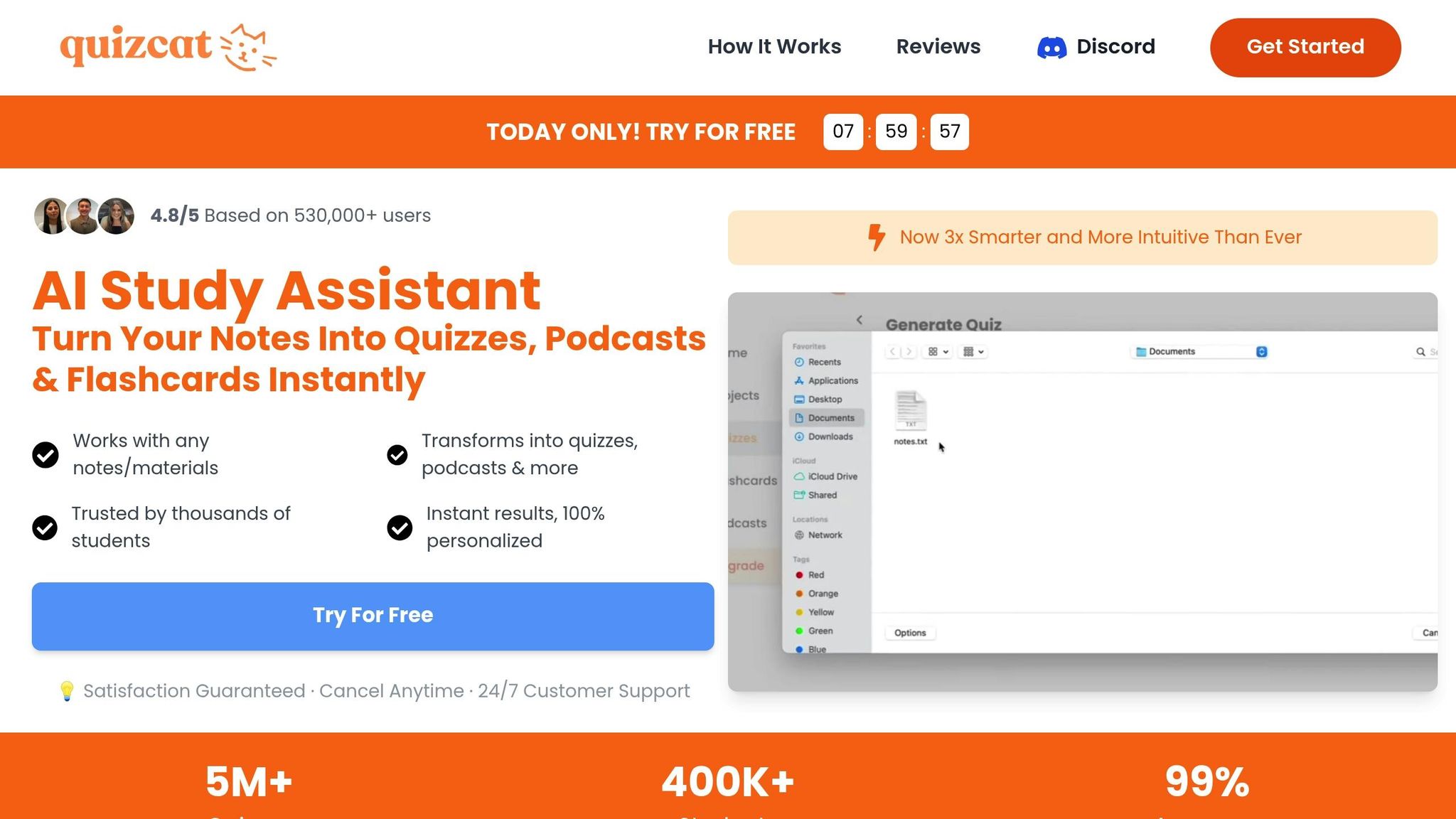
AI vs Human Grading: Key Differences
AI grading is fast, consistent, and scalable, while human grading offers personalized feedback and contextual understanding. Here's how they compare:
- Speed: AI provides instant results; humans take hours or days.
- Volume: AI handles thousands of assignments; humans are limited by time.
- Consistency: AI is uniform; human grading may vary.
- Feedback: AI gives standardized feedback; humans offer tailored insights.
- Cost: AI is cost-efficient; human grading is labor-intensive.
Quick Comparison
| Aspect | AI Grading | Human Grading |
|---|---|---|
| Speed | Instant results | Hours to days |
| Volume | Unlimited | Limited by time |
| Consistency | Highly consistent | May vary |
| Feedback Type | Standardized, quick | Personalized, contextual |
| Cost Efficiency | High (automated) | Variable (labor-intensive) |
AI is great for speed and scale, but humans excel at handling complex or creative tasks. Combining both offers the best results.
Should AI be used for grading schoolwork?
Processing Time
There's a noticeable difference in speed between AI and human grading systems, each with its own strengths and limitations.
AI Speed: Instant Results
AI grading systems work almost instantly, evaluating submissions as soon as they're received. They can handle multiple tasks at once, making them highly efficient at delivering results. For example, Quizcat AI can quickly transform study materials into different learning formats.
"This tool just gets it. I was spending hours making flashcards before, but now I upload my notes, and everything's done in seconds. Total game-changer." - Ryan Kim
While AI provides immediate results, it lacks the depth and contextual feedback that human grading offers.
Human Speed: A Careful Process
Human grading, on the other hand, involves a slower, more deliberate process. Teachers review each submission carefully, considering various factors and subtleties. This approach allows for detailed, personalized feedback, which is especially important for complex assignments or nuanced student responses.
The key difference lies in AI's speed and automation versus human grading's thoughtful and detailed approach. Both methods serve different purposes in educational assessments.
Grading Quality
AI and human grading each bring distinct strengths to the table when it comes to evaluation.
AI Reliability
AI grading systems are built for consistency and precision. Advanced algorithms ensure that criteria are applied uniformly every time. For example, Quizcat AI boasts an impressive 99% accuracy rate and has already processed over 5 million quizzes.
"Uploading my notes and instantly having quizzes ready feels like magic. This tool has completely changed the way I study. I actually feel prepared for once!" - Maya Johnson
However, while AI shines in consistency, it lacks the ability to interpret context like humans do.
Human Judgment
Human graders, on the other hand, bring the ability to evaluate more nuanced assignments. They excel at analyzing creative writing, critical thinking, and research projects. That said, human evaluations can vary due to factors like fatigue, personal biases, or time limitations.
| Aspect | AI Grading | Human Grading |
|---|---|---|
| Consistency | Uniform across all evaluations | Can vary between graders |
| Complexity Handling | Ideal for objective questions | Better for subjective responses |
| Feedback Quality | Standardized comments | Tailored, personalized insights |
With an average user rating of 4.8/5 from over 530,000 users, AI grading systems have proven to be dependable in specific educational scenarios. The best results often come from combining AI's efficiency with the nuanced understanding that only human graders can provide. This approach ensures a more balanced and effective assessment process.
Student Feedback
When comparing AI and human evaluations, the way feedback is delivered plays a key role in setting them apart.
AI Comments
AI grading offers instant and structured feedback, highlighting both strengths and areas for improvement. With the ability to analyze responses and generate detailed comments in seconds, AI feedback has earned a 4.8/5 rating from over 530,000 users.
One major advantage is its consistency. Every student gets equal attention, no matter when or how often they submit their work. This approach removes issues like favoritism or grader fatigue.
That said, AI feedback relies on pre-programmed patterns. It’s great for spotting common mistakes and offering standardized suggestions, but it often lacks the depth of understanding that human graders bring. Personalized guidance, especially in unique or complex situations, is harder for AI to deliver.
Human Comments
Human graders bring something AI can’t replicate: experience and empathy. They can pick up on subtle improvements in a student’s work and provide encouragement that feels personal and meaningful.
| Feedback Aspect | AI Comments | Human Comments |
|---|---|---|
| Response Time | Immediate | Hours to days |
| Personalization | Standardized | Contextual and individualized |
| Emotional Intelligence | Limited | High empathy and understanding |
| Pattern Recognition | Great for common errors | Strong in unique situations |
Humans excel when assignments involve creativity or critical thinking. Teachers can adapt their feedback style, share examples from their own experience, and tailor their guidance to fit where each student is in their learning journey.
"Flashcards and quizzes are accurate; the podcast feature, however, enhances productivity on the go." - Chloe Adams
Although human feedback takes more time, its ability to address context and offer thoughtful suggestions often leads to more impactful learning experiences.
sbb-itb-1e479da
Large-Scale Use
When it comes to handling grading on a large scale, AI and human approaches show clear differences in efficiency and reliability.
AI Mass Grading
AI grading systems, like QuizCat AI, excel at processing large volumes of assignments with speed and precision. For example, QuizCat AI operates with 99% accuracy, making it a reliable tool for handling standardized tests. This ensures institutions receive consistent and timely feedback, even during high-demand periods.
Here's a quick look at a key factor:
| Factor | AI Performance | Impact |
|---|---|---|
| Quality Consistency | Maintains 99% accuracy | Reliable for large-scale grading |
Unlike AI, human graders struggle to maintain such efficiency and consistency when dealing with heavy workloads.
Human Workload Limits
Studies reveal that human graders experience a drop in quality after reviewing 30–40 assignments in one session. This limitation often leads to delays and inconsistencies, particularly in settings with high student-to-teacher ratios.
Key details on human grading limits:
| Aspect | Impact on Human Graders | Practical Limit |
|---|---|---|
| Assignment Load | Quality declines with high volume | Around 30–40 assignments per session |
AI grading systems address these challenges head-on, providing consistent results without the fatigue or time constraints that human graders face.
"I was spending hours making flashcards before, but now I upload my notes, and everything's done in seconds. Total game-changer. 🧠" - Ryan Kim
System Weaknesses
Both AI and human grading systems have their own challenges that can affect how well they perform and how reliable they are.
AI Gaps
While AI grading systems perform well in many areas, they often fall short when faced with complex or subjective tasks. Even with a high accuracy rate of 99%, AI struggles with tasks that require deeper interpretation or judgment.
Key limitations of AI grading:
| Challenge | Impact | Example |
|---|---|---|
| Creative Writing | Difficulty assessing artistic quality | Poetry analysis, storytelling |
| Complex Arguments | Trouble evaluating nuanced reasoning | Philosophical essays, debates |
| Cultural Context | Misses references tied to culture | Literature, social studies |
AI is well-suited for straightforward, objective assessments but lacks the human insight needed for more subjective evaluations. However, human grading isn’t without its own issues.
Human Errors
Human graders face challenges that can lead to errors, often stemming from personal biases or external pressures.
Common problems with human grading:
| Error Type | Impact | Factors |
|---|---|---|
| Fatigue | Accuracy drops during long sessions | Lack of adequate breaks |
| Bias | Inconsistent scoring | Influence of personal judgments |
| Time Pressure | Rushed evaluations | Large class sizes, tight deadlines |
"I was spending hours making flashcards before, but now I upload my notes, and everything's done in seconds. Total game-changer. 🧠" - Ryan Kim
Tools like QuizCat AI can help address these human limitations by offering consistent and efficient evaluations, even for large volumes of assignments.
Conclusion
AI and human grading each bring distinct advantages to the table. By combining AI's speed and scalability with the nuanced understanding that human graders offer, assessments can reach new levels of efficiency and depth. While AI has revolutionized large-scale evaluations, human insight remains key for contextual understanding.
Here’s how blending these strengths can improve assessments:
| Aspect | Combined Impact |
|---|---|
| Speed | Faster feedback delivery |
| Consistency | More reliable evaluations |
| Feedback Quality | Broader and clearer insights |
| Volume Capacity | Better resource management |
This hybrid approach has already made a measurable impact. Over 400,000 students now use AI-assisted grading tools, with platforms like QuizCat AI boasting a 4.8/5 rating from more than 530,000 users.
Students and educators have shared their positive experiences:
"I was drowning in notes before I found this tool. Now, it turns everything into flashcards, quizzes, and even podcasts! Studying has never been this easy. 🚀 Highly recommend!" - Emily Carter
Many institutions are adopting this combined strategy, recognizing that effective assessments need both AI’s efficiency and the critical judgment only humans can provide. This partnership ensures students receive consistent and meaningful evaluations.
QuizCat AI Features

QuizCat AI transforms your notes into interactive quizzes, flashcards tailored to your learning pace, and even study podcasts - all with an impressive 99% accuracy.
Here’s a quick look at its standout features:
| Feature | Function | Impact |
|---|---|---|
| Smart Quiz Generation | Analyzes your materials to create focused quizzes | Over 5 million quizzes generated |
| Adaptive Flashcards | Matches your learning speed to strengthen key concepts | Offers personalized review sequences |
| Study Podcasts | Turns notes into natural-sounding audio for easy listening | Perfect for studying while multitasking |
These tools cater to different learning styles and goals. QuizCat AI also supports multiple file formats (like PDF, DOCX, and TXT), works seamlessly on mobile devices, and uses advanced encryption to keep your data secure.
Alex Rivera shared their experience:
"Was stuck in the 'write notes but never review them' cycle. This AI saved me. It's all done for me now - flashcards, quizzes, everything! 🤯"
With more than 400,000 active users, QuizCat AI has become a go-to solution for students. Right now, you can access these tools for just $9.99 per month (down from $14.99), making it easier than ever to get the study help you need.
